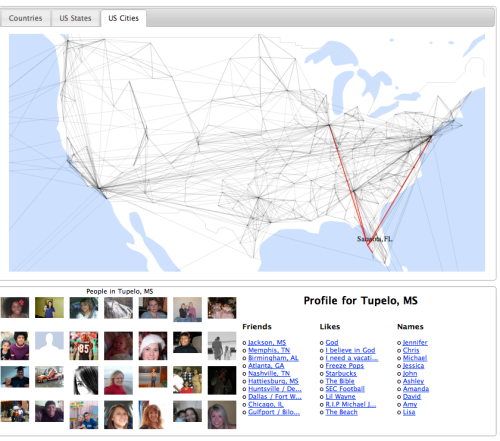If this doesn’t bring to mind Analyst’s Notebook and Palantir, what would? There have been many web-based link diagrammers released (tracking facebook friends, twitter topics, etc), but this one seems to be usable for generating actual results.
The NNDB Mapper is a visual tool for exploring the connections between people in NNDB, linking them together through family relations, corporate boards, movies and TV, political alliances, and shadowy conspiracy groups. Maps can be saved and shared for others to explore.
You start with a search, say, Lynx Gaede, 1/2 of the Nazi teenie-bopper twin band Prussian Blue. Here is her profile page on NNDB: http://www.nndb.com/people/053/000113711/
Then, click the NNDB Mapper in the top right corner. http://mapper.nndb.com/start/?id=113711

You get a simple entity link map. Hover the mouse over April Gaede, the stage mom, and in the resulting dropdown, click “Expand 3 Nodes.” Then do the same with National Alliance, and you will see luminaries like Kevin Strom, founder of the National Vanguard.
In this way you can being uncovering connections between people. The database appears to be crowd-sourced, so it gets more useful and complete the more people use it. Neat.
The maps can get complicated. Here’s the New York Times link map.
via NNDB: Tracking the entire world.
While we’re on it, who are Prussian Blue? Here’s the documentary: http://www.archive.org/details/MichielSmit.comPrussionBlueMichielSmit.com








 Enter
Enter 

